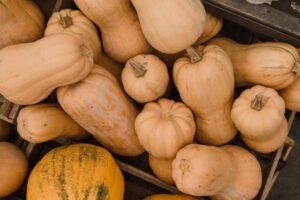“Superfood” is a marketing term rather than a scientific classification. It is used to describe foods that are exceptionally nutrient-dense, meaning they are packed with a high concentration of beneficial vitamins, minerals, antioxidants, and other compounds that have potential health benefits. Superfoods are often promoted for their ability to support overall well-being and prevent various health conditions.
The concept of superfoods gained popularity due to the increasing interest in nutrition and a desire to find foods that can offer a wide range of health benefits. Some common attributes of superfoods include being rich in antioxidants, vitamins, and minerals, and having potential anti-inflammatory or disease-fighting properties. Additionally, they go hand-in-hand with a weight management strategy because they’re lower in calories. They also support the immune system, they’re good for the heart, and they contribute to healthier skin and hair.
Superfoods are found throughout the year. This post, however, will focus on 10 fall superfoods.
Fall Superfoods
Fall is a great time to take advantage of the seasonal produce that becomes available. Incorporating fall superfoods into your diet can provide a variety of health benefits. Below are 10 fall superfoods to consider including in your nutrition plan.
(1) Pumpkin

Pumpkin is rich in vitamins A and C, as well as fiber. It’s also a good source of beta-carotene, which is important for eye health and immune support. You can use pumpkin in soups, roasted dishes, smoothies, and even in baking.
(2) Sweet Potatoes

Sweet potatoes are packed with vitamins A and C, fiber, and various antioxidants. They are a versatile ingredient that can be used in a wide range of dishes, from casseroles to roasted vegetables.
(3) Apples

Apples are high in fiber, vitamins, and antioxidants. They can help support digestion and boost your immune system. Enjoy them as a healthy snack or incorporate them into salads and desserts.
(4) Cranberries

Cranberries are known for their high levels of antioxidants, particularly vitamin C. They may help prevent urinary tract infections and provide other health benefits. Fresh cranberries can be used in sauces, while dried cranberries are great for salads and snacking.
(5) Brussels Sprouts

Brussels sprouts are a cruciferous vegetable rich in fiber, vitamins K and C, and various antioxidants. Roast or sauté them for a delicious side dish.
(6) Pomegranates

Pomegranates are loaded with antioxidants and vitamin C. The seeds can be added to salads, yogurt, or used to make fresh juice.
(7) Butternut Squash

Butternut squash is a good source of vitamin A, vitamin C, and fiber. It can be used in soups, roasted dishes, or as a healthy pasta alternative.
(8) Cinnamon

While not a traditional superfood, cinnamon is often associated with fall flavors and has been linked to potential health benefits, such as improved blood sugar control. Sprinkle it on your oatmeal, yogurt, or use it in baking.
(9) Kale

Kale is a nutrient-dense leafy green that’s available throughout the fall. It’s a great source of vitamins A, C, and K, as well as minerals and fiber. You can use kale in salads, smoothies, or sauté it as a side dish.
(10) Winter Squash

Varieties like acorn squash and spaghetti squash are rich in vitamins and minerals. They can be roasted, stuffed, or used in soups and stews.
Incorporating these fall superfoods into your diet can not only improve your nutrition but also add variety and seasonal flavors to your meals. Remember to maintain a balanced diet by including a variety of food groups to ensure you get a wide range of nutrients.
It’s important to note that the term “superfood” can be somewhat misleading because no single food can provide all the nutrients your body needs. A balanced diet that includes a wide variety of foods is the key to optimal nutrition. Superfoods can certainly be part of a healthy diet, but they should be consumed as part of a well-rounded, diverse eating plan. Additionally, scientific research is ongoing, and the health benefits of some superfoods may be overstated in popular culture, so it’s important to approach these foods with a balanced perspective.


